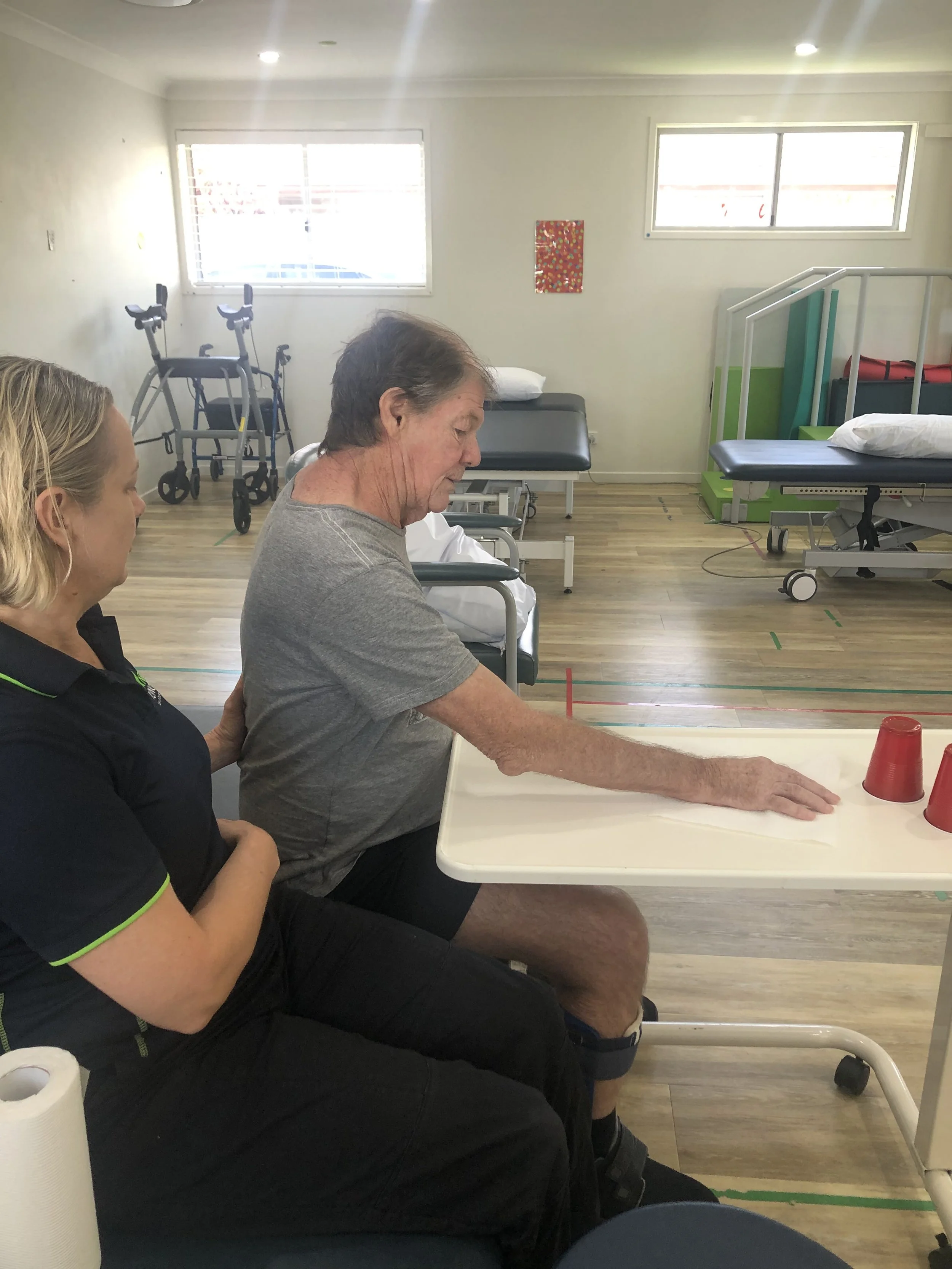Sensory Impairments Post Stroke
Impairments relating to decreased/abnormal sensation are quite common after suffering a stroke. 1 in 2 stroke patients will experience sensory abnormalities. A sensory impairment can be linked to poorer functional outcomes with stroke rehabilitation.
Some sensory impairments from stroke can include:
Loss of light touch
Lack of awareness where your arm is in space – this is seen in 36-54% of stroke patients
Decreased awareness of temperature
Loss of ability to recognise objects through touch
Hypersensitivity
How can a sensory loss impact a person?
One’s ability to interact with the world around them
Pinch grip, hand function
Goal-directed arm use
Returning to work and previous life activities.
Testing and Treating Sensory Deficits:
There are numerous strategies that can be integrated into a stroke rehabilitation program to help with sensory issues. This can include sensory re-education; which uses sensory stimuli to retrain or stimulate sensory pathways.
This retraining can use light touch, vibrations, temperature changes, pressure, touching different objects and identifying joint position in space. Similarly with other areas of stroke rehabilitation, repetition and exposure is key.
TO NOTE: sensation deficits are not only seen in stroke patients. Numerous neurological conditions can present with sensation deficits, such as CIDP, spinal cord injuries, multiple sclerosis, Guillain barre syndrome and peripheral neuropathy.
Resources and Sources
Carey, L., Oke, L., & Matyas. T. A. (1997). Impaired touch discrimination after stroke: A quantitative test. Neurorehabilitation and Neural Repair, 11, 219-232.
Link to paper: https://journals.sagepub.com/doi/abs/10.1177/154596839701100404Carey, L. M., Oke, L. E., & Matyas, T. A. (1996). Impaired limb position sense after stroke: A quantitative test for clinical use. Archives of Physical Medicine and Rehabilitation, 77, 1271-78. Link to paper: https://www.archives-pmr.org/article/S0003-9993(96)90192-6/pdf
Link to pdf of paperCarey, L. M., Mak-Yuen, Y., & Matyas, T. A. (2020). The functional Tactile Object Recognition Test: A unidimensional measure with excellent internal consistency for haptic sensing of real objects after stroke. Frontiers in Neuroscience.
Link to pdf of paper: Carey et al., 2020

